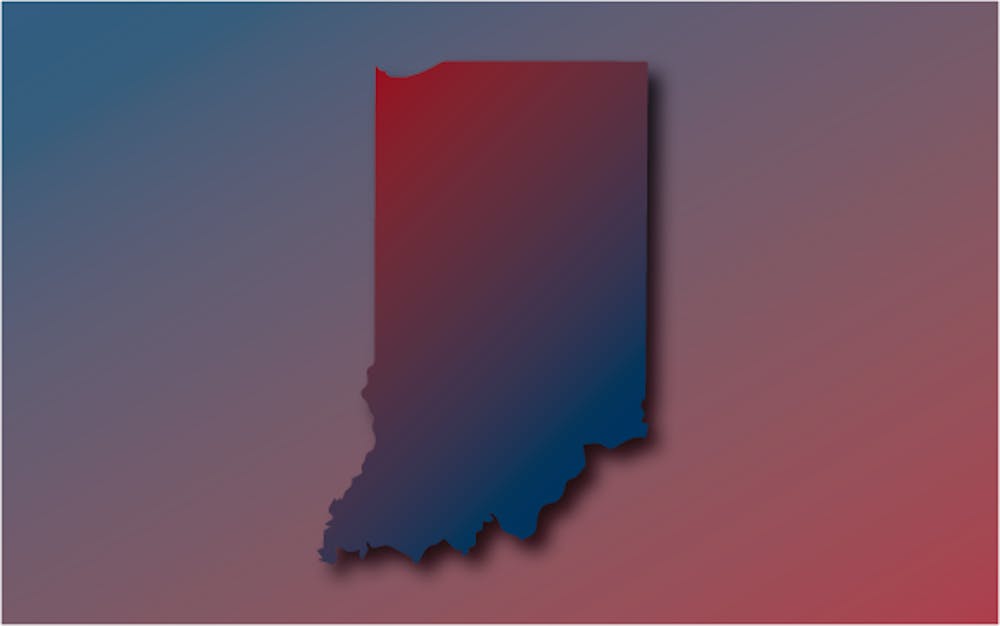With hard work and applying key action steps from Georgia, Indiana can become a battleground state for Democrats.
Despite President Donald Trump’s strong 16-point win in 2020, Indiana hasn’t always been a deeply Republican state. In 2008, Indiana flipped blue for President Obama, and in 2012, Indiana elected Democratic Sen. Joe Donnelly. Georgia hadn’t done either since 1992 and 1996 respectively. Yet, Georgia flipped for the Democrats during the presidential election and won them two Senate seats this year.
It wasn’t magic.
These major wins for Georgia Democrats materialized after decades of perseverance, a clear strategy and leadership from Black women. Indiana can and must replicate their efforts here in order to build a sustainable future for Democrats across the state.
While organizations such as Fair Fight and The New Georgia Project registered large numbers of voters, the path to exponentially expanding the Democratic electorate was implementing automatic voter registration, AVR, in Georgia — something Stacey Abrams fought for as Georgia House Minority Leader.
In the two-year period between Georgia’s AVR implementation and the 2018 general election, 702,635 residents registered as new voters and nearly 2.4 million voters updated their registrations. After Abrams lost by a mere 55,000 votes during Georgia’s 2018 gubernatorial election, organizers looked to newly registered voters as a source of untapped potential for the 2020 election.
In Indiana, nearly half a million Hoosiers are eligible to vote but unregistered. Although not all unregistered voters are Democrats, targeted voter registration in communities of color can expand the pool of eligible voters to turnout during elections.
Furthermore, if Indiana Democratic elected officials make a concerted effort to pass automatic voter registration, we can capitalize on young voters. It’s a difficult feat with a Republican supermajority in the statehouse but nonetheless crucial to long-term Democratic success.
In 2019, Abrams released “The Abrams Playbook,” an online guide outlining the steps taken before, during and after her 2018 bid for governor. A common theme is the focus on voters of color, specifically by building on Georgia’s large Black electorate.
Abrams defied false beliefs of a voter participation ceiling when she “tripled AAPI turnout, tripled Latinx turnout, increased African American turnout by 40%, and increased turnout among young voters by 139%.”
Senators-elect Rev. Raphael Warnock and Jon Ossoff used Abrams’ knowledge from 2018 to lead them to success in their runoff races. Both heavily prioritized voters of color to close their general election margins. The Democratic Senatorial Campaign Committee invested in extensive polling on Black infrequent voters, Asian voters and Latino voters to create winning campaign strategies. Georgia grassroots organizations organized Black, Indigenous and other People of Color (BIPOC) communities through direct voter contact and tailored outreach campaigns.
A significant difference between Georgia and Indiana is their respective demographic breakdowns — 52% vs. 78% White, 32.6% vs. 9.9% Black, 9.9% vs. 7.3% Hispanic or Latino and 4.4% vs. 2.6% Asian.
This difference inadvertently requires Indiana Democrats to rely on white Republican voters more so than Georgia Democrats have to. Still, Indiana Democrats can broaden their electorate in meaningful ways by engaging communities of color.
“While Georgia isn’t the same as Indiana demographics-wise, we still have pockets of urban areas where we can do [similar work]. We just have to do it,” said Jennifer Crossley, chairwoman of the Monroe County Democratic Party.
2020 general election turnout results paint a similar picture of missed opportunities for Democrats. Indiana’s three most Democratic counties — Lake, Marion and Monroe — yielded turnout percentages between the upper 50s and low 60s, lagging behind the statewide average of 65%. Boosting turnout with year-round community organizing could help close the Democratic vote margins statewide and significantly tip the scales in local and state elections.
If Indiana Democrats want to be competitive over the next decade, they must make a coordinated effort in local communities — specifically communities of color — to win offices back seat by seat. As seen in Georgia, prioritizing voting accessibility in Indiana is a must, especially as it pertains to automatic voter registration.
Heavily investing in communities of color is not the path to victory, but it is a necessary investment for Indiana Democrats to build a sustainable and competitive electorate over the next decade.
It took Stacey Abrams, LaTosha Brown, Nse Ufot and other Black women leaders years and millions of dollars to change the game in Georgia. This can also be done in Indiana. Once you step aside and pay attention to the important work being done by Democratic activists, “you would see that our Stacey Abrams are really here,” as Crossley said.
Alessia Modjarrad (she/her) is a junior studying Economic Consulting and Law and Public Policy. She is the president of the College Democrats of Indiana and works as a political operative on various Democratic campaigns.






